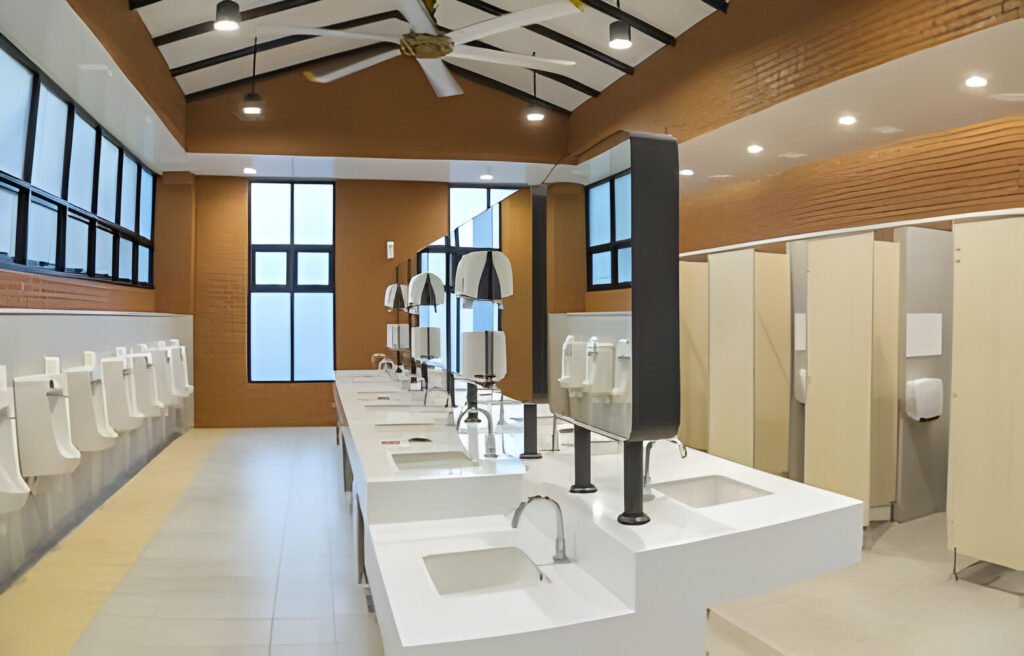Public places serve as the heartbeat of communities, bringing people together for various activities. The cleanliness and sanitation of these spaces play a pivotal role in shaping the health and well-being of individuals and the overall community. Clean facilities not only contribute to a healthier environment but also foster a sense of pride and civic responsibility among residents. Here in this blog, we will explore the significance of sanitation at public places and the positive impact that it can leave on individuals, communities, and the overall quality of life. So let us start and understand the importance of sanitation and how it contributes in our day-to-day life.
Understanding the Importance Of Public Sanitation
Public sanitation holds paramount importance in fostering the health, well-being, and overall quality of life in communities. Clean and well-maintained public spaces are integral to preventing the spread of infectious diseases, creating safer environments for residents and visitors alike. The impact of public sanitation extends beyond physical health, influencing mental well-being and community pride. A commitment to sanitation contributes to the aesthetics of neighbourhoods, encouraging outdoor activities and social interactions. Moreover, public sanitation plays a very important role in environmental sustainability, reducing pollution, conserving natural resources, and creating spaces that reflect a shared sense of responsibility. Let us understand this in detail:
- Disease Prevention: One of the primary reasons to prioritize public sanitation is the prevention of diseases. Clean facilities help control the spread of infectious diseases, such as gastrointestinal infections and respiratory illnesses. Proper waste disposal, regular cleaning of public spaces, and the availability of clean water are essential components of disease prevention. When communities invest in maintaining sanitary conditions, they create a barrier against the transmission of harmful pathogens.
- Community Health and Well-being: Clean public facilities contribute to the overall health and well-being of community members. Access to clean and well-maintained public spaces encourages physical activity, outdoor recreation, and social interaction. Parks, playgrounds, and public restrooms that are kept in good condition promote a healthier lifestyle and mental well-being. When individuals feel safe and comfortable using public spaces, they are more likely to engage in activities that contribute to a healthier lifestyle.
- Environmental Sustainability: Promoting public sanitation is not just about human health but it also extends in contributing environmental sustainability. Proper waste management, recycling initiatives, and conservation of natural resources are integral components of a sanitation strategy. Clean facilities often go hand in hand with environmentally conscious practices, reducing pollution and minimizing the impact on ecosystems. Public awareness campaigns can further educate communities on the importance of sustainable practices for the benefit of the environment and future generations.
- Tourism and Economic Development: Clean and well-maintained public spaces are attractive to visitors, contributing to tourism and economic development. Tourists are more likely to explore and spend time in the areas with clean facilities, enhancing the local economy through increased tourism revenue. Moreover, businesses thrive in areas where the surroundings are clean and welcoming. As communities invest in public sanitation, they create an environment that fosters economic growth and development.
- Civic Pride and Sense of Responsibility: A clean public space fosters a sense of civic pride and responsibility. When individuals witness their communities investing in sanitation, they are more likely to take pride in their surroundings and actively participate in maintaining cleanliness. Public awareness campaigns, community clean-up initiatives, and educational programs can further strengthen the sense of responsibility among residents, creating a positive feedback loop that benefits the entire community.
Now let us understand how you can maintain sanitation at public places because maintaining sanitation at public places is a collective responsibility that involves the cooperation of individuals, local authorities, businesses, and community organizations.
- Routine Cleaning and Waste Management
Regular cleaning schedules should be established for public places, encompassing parks, streets, transportation hubs, and other high-traffic areas. Designated personnel or cleaning crews should conduct routine maintenance, including the emptying of waste bins, sanitization of surfaces, and prompt removal of litter. Adequate waste management infrastructure, including strategically placed bins, promotes responsible disposal and helps prevent the accumulation of trash.
- Public Restroom Facilities
Clean and well-maintained public restrooms are imperative for overall sanitation. Establishing a regular cleaning and maintenance routine for toilet sanitation ensures that they remain hygienic and properly equipped with essentials such as soap and toilet paper. Regular inspections are essential to identify and address issues promptly, maintaining a positive and sanitary environment for users.
- Community Engagement and Education
Community involvement is a powerful force in sustaining public sanitation. Initiatives such as community clean-up events and neighbourhood watch programs foster a sense of pride and
ownership among residents. Educational campaigns, utilizing various channels like social media, posters, and community workshops, play a crucial role in promoting responsible behaviour. When individuals understand the impact of their actions on public spaces, they are more likely to contribute to their upkeep.
- Technological Solutions
Leveraging technology can significantly enhance public sanitation efforts. Implementing sanitary facilities and smart waste management solutions, such as bins with sensors that signal when they need emptying, improves efficiency and reduces overflow. GPS tracking systems for waste collection vehicles can optimize routes, ensuring timely and effective waste removal. These technological innovations contribute to a more streamlined and sustainable approach to sanitation.
- Enforcement and Regulations
Effective enforcement of sanitation regulations is essential. Clearly defined rules and penalties for littering and illegal dumping create a deterrent, encouraging responsible behaviour. Increased visibility of law enforcement personnel in public spaces helps enforce these regulations, creating a safer and cleaner environment.
- Collaboration with Local Businesses
Engaging with local businesses is vital for maintaining public sanitation. Collaborative efforts can include businesses adopting responsible waste disposal practices, participating in community clean-up initiatives, and contributing to the overall cleanliness of shared spaces. Also to ensure that their activities contribute to, rather than detract from, public sanitation efforts. Building partnerships fosters a sense of collective responsibility for the community’s well-being.
Conclusion
As a conclusion, promoting public sanitation is not just a matter of cleanliness but it is a fundamental aspect of community health, environmental sustainability, and economic development. Also, it requires a multifaceted approach that integrates cleaning schedules, waste management, public awareness, community engagement, and technological innovations. Clean facilities contribute to disease prevention, enhance community well-being, support environmental conservation, attract tourism, and instill a sense of civic pride. As communities prioritize the need of sanitation, they contribute to the creation of environments that not only protect public health but also nurture vibrant and connected communities. The commitment to sanitation is an investment in the well-being and vitality of the community for generations to come.






